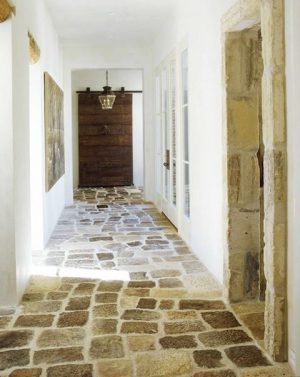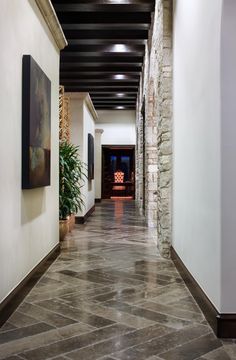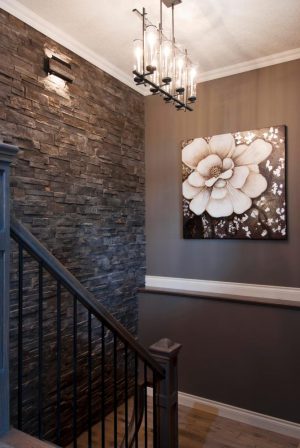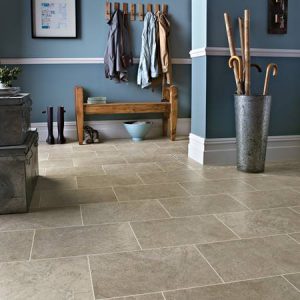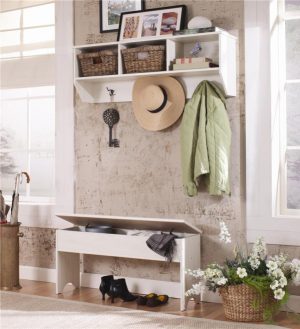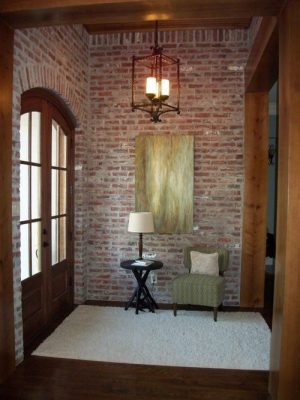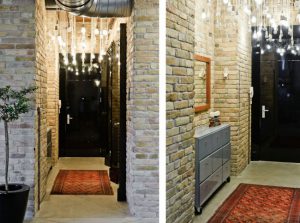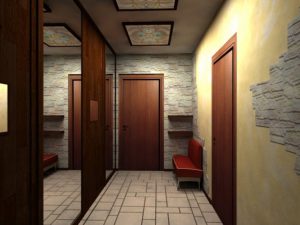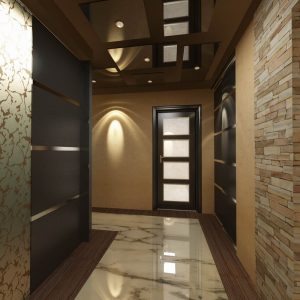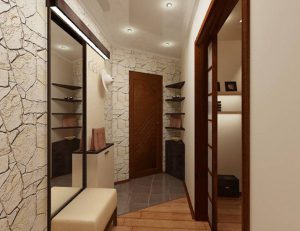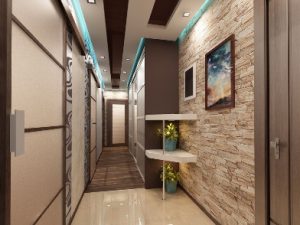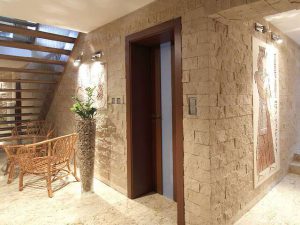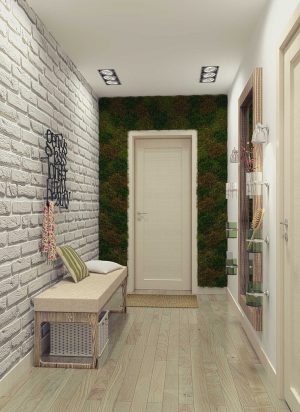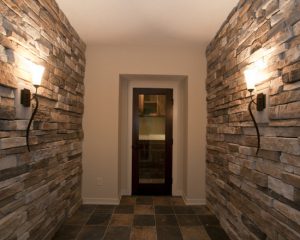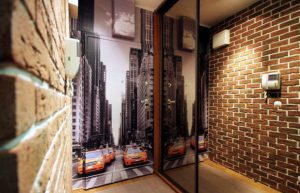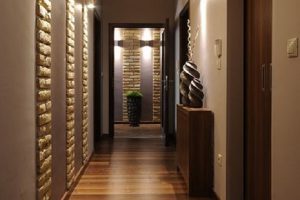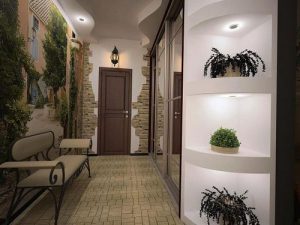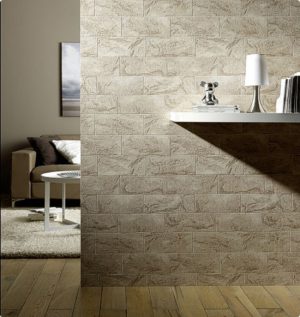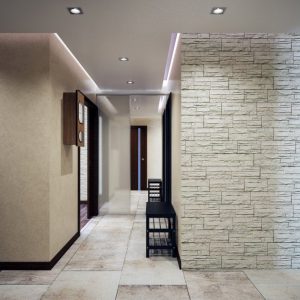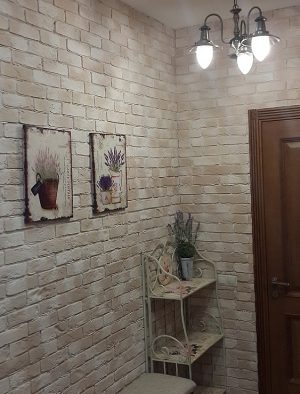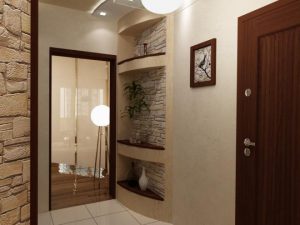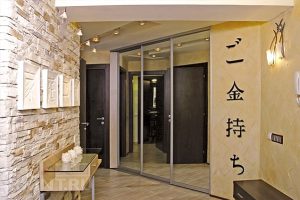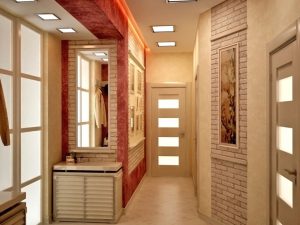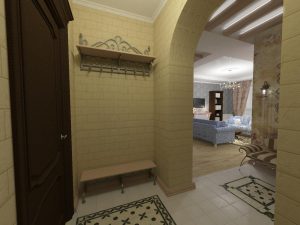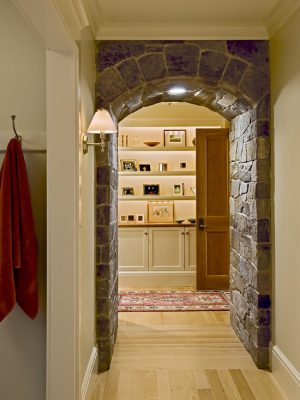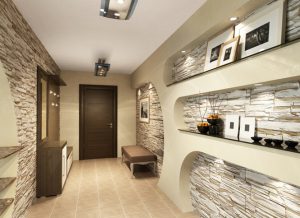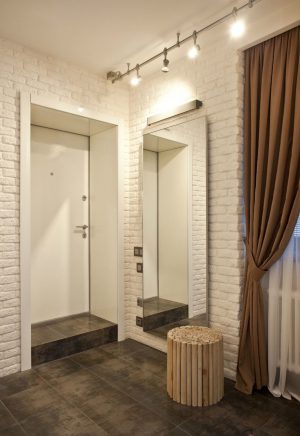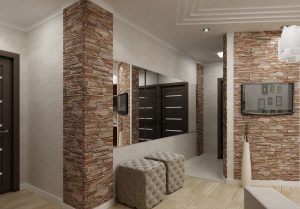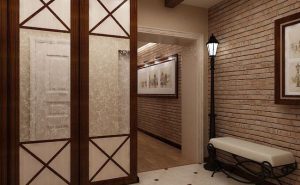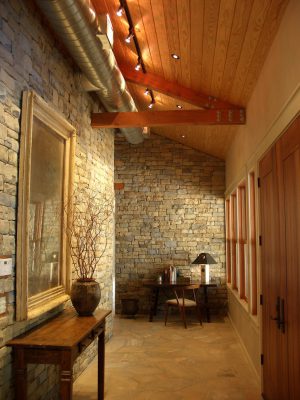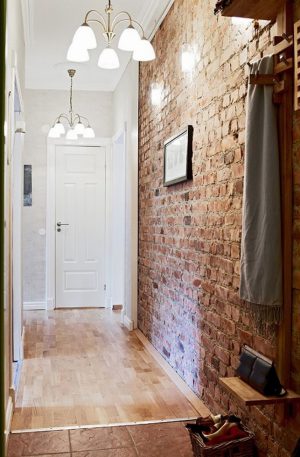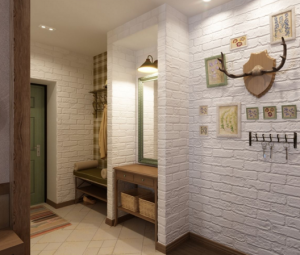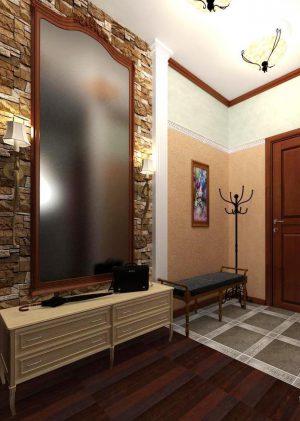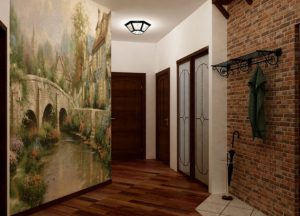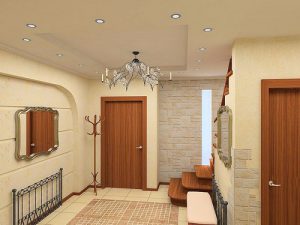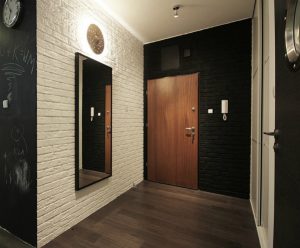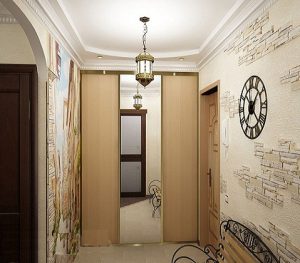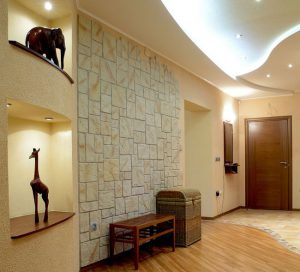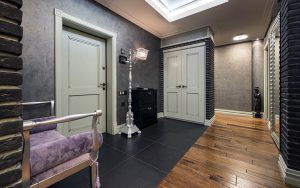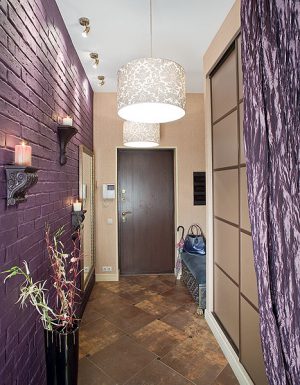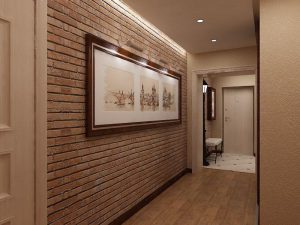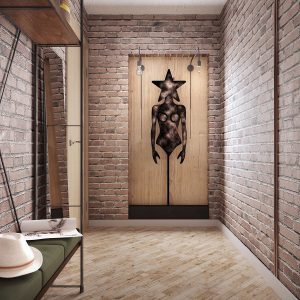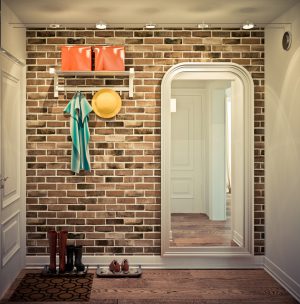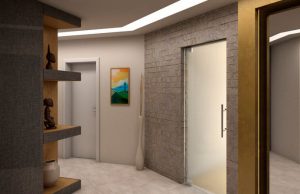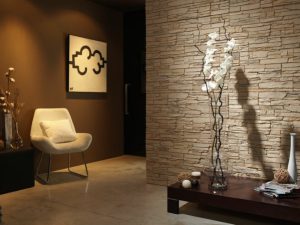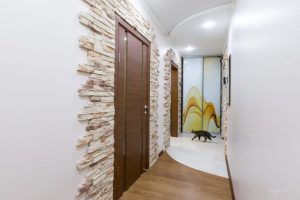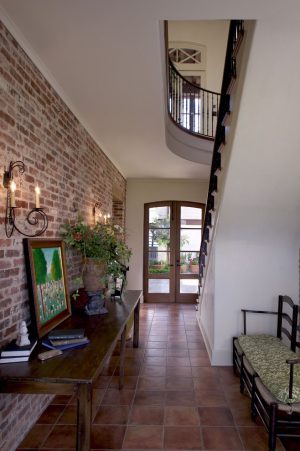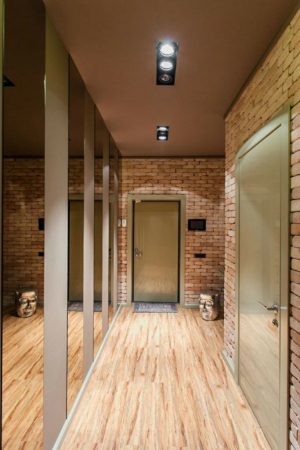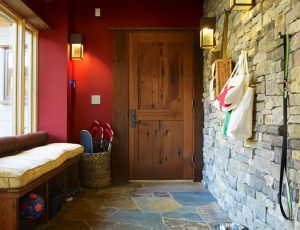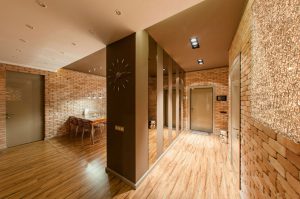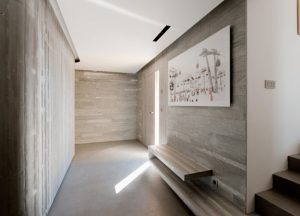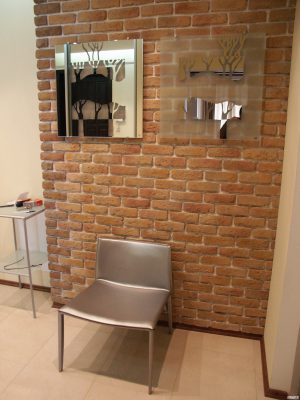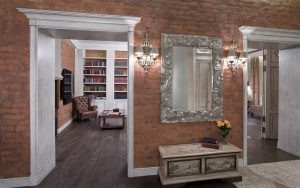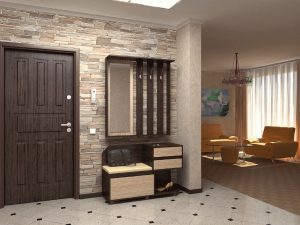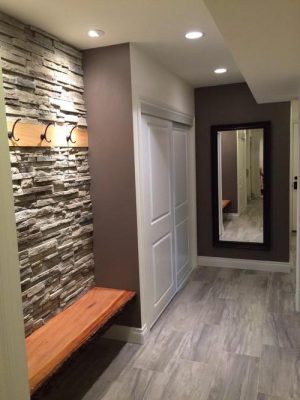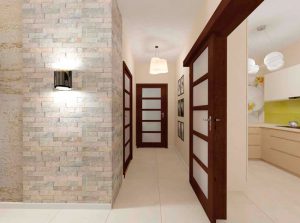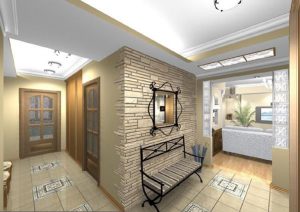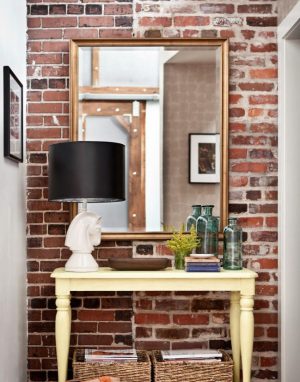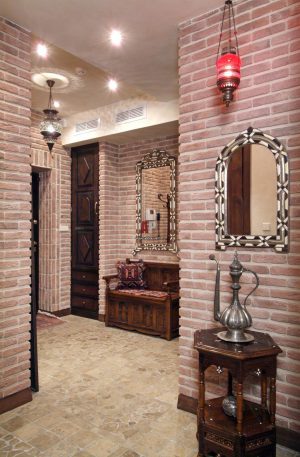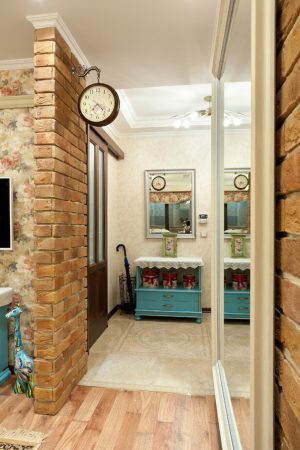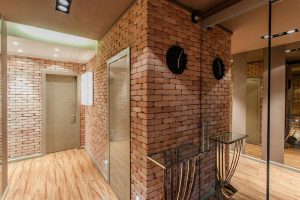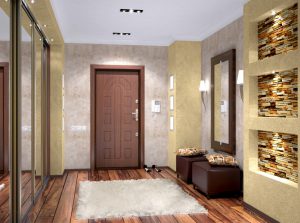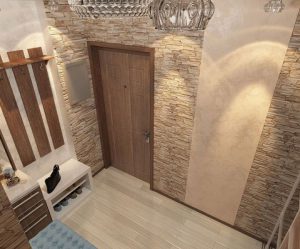Most often, the decoration of the hallway in dwellings is carried out with the help of decorative stone. This is due not only to its presentability and the ability to fit into any type of interior, but also to its durability, ease of maintenance and practicality.
- Decorative stone in the hallway: order and comfort
- Advantages of decorating the hallway with decorative stone
- What are decorative finishing stones
- How to choose color, size and texture
- How to fit artificial stone into the overall design of the hallway
- Decorative stone flooring in the hallway
- How to combine classic style and decorative stone
- Conclusion
- Photo gallery - decorative stone in the hallway
- Video
The rather high cost of such material looks quite natural, but it is not at all necessary that the decorative stone in the hallway completely covers the walls and floor. The front door, the lower part of the walls, some individual items - finishing all this will be quite enough to make the interior look more lively and original.

Decorative stone in the hallway
Among other things, the independent implementation of such a finish is not so problematic, so you will save money on the services of specialists.
back to index ↑Decorative stone in the hallway: order and comfort
The reasons why decorative stone is used more and more often in the design of the hallway are very simple to name. It is in the hallway that a huge amount of dust and dirt accumulates, which enters the house from the street. Therefore, it is necessary to carry out cleaning here much more often than in other rooms. And given the antibacterial and dirt-repellent qualities of artificial stone, it will not be afraid of contact with either water or detergents. Therefore, during cleaning in the hallway, trimmed with decorative stone, one should not be afraid to cause any damage to it.

Decorative stone has high dirt-repellent properties
During the technological process for the formation of decorative stones, they can get a completely different color, texture and shape. But the ease of processing, relatively low weight and a high level of mechanical resistance allow us to say that the decoration of the hallway with decorative stone will not only be reliable, but also durable. Do not forget about the versatility of this material, it is allowed to combine it with other types of decor.
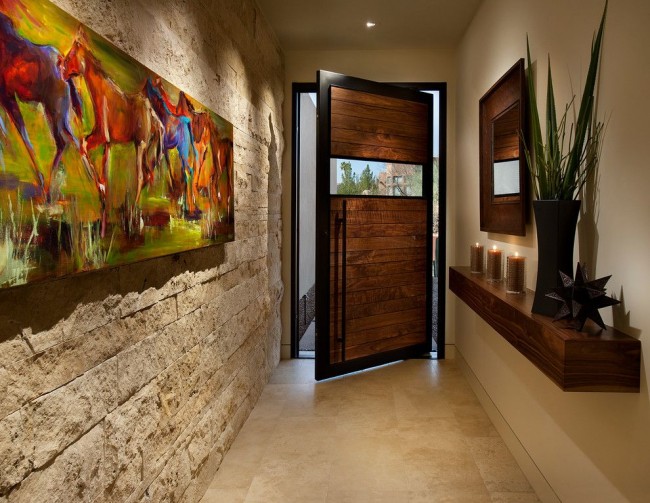
Decorative stone is resistant to mechanical damage
If, nevertheless, you have made a choice in favor of a decorative stone for finishing the hallway, you should not forget that a fragmentary finish will look most preferable. It will affect:
- Window and door openings.
- viewed angles.
- Niches and depressions.
- contact zones.
- Areas where shoes, household items, etc. are stored.
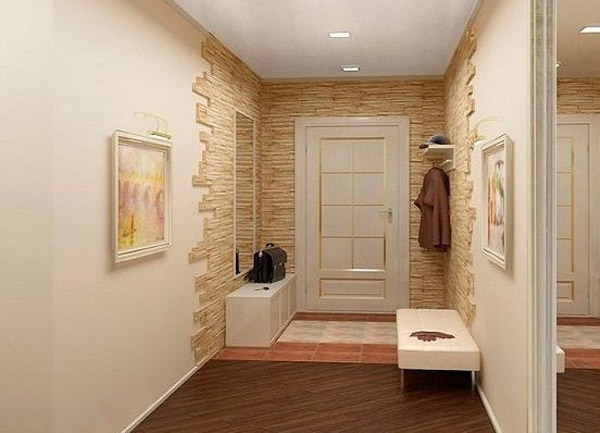
Fragmented decoration with decorative stone in the hallway
Another advantage of decorative stone finishes is that they can be laid on any surface, including. and relief. However, it must be carefully prepared in advance for finishing work, by increasing the adhesion index.
back to index ↑Advantages of decorating the hallway with decorative stone
There are numerous reasons why this particular material should be chosen in order to deal with wall decoration. Let's get acquainted with the main ones:
- Appearance quality. The main reason why this material is generally preferred is the natural roughness of its appearance. If as a child you simply admired medieval castles, now you have the opportunity to embody their design at home. And if the use of decorative stone in the bedroom is unlikely to justify itself, then the presence of decorative stone in the interior of the hallway will allow you to get a chic result.
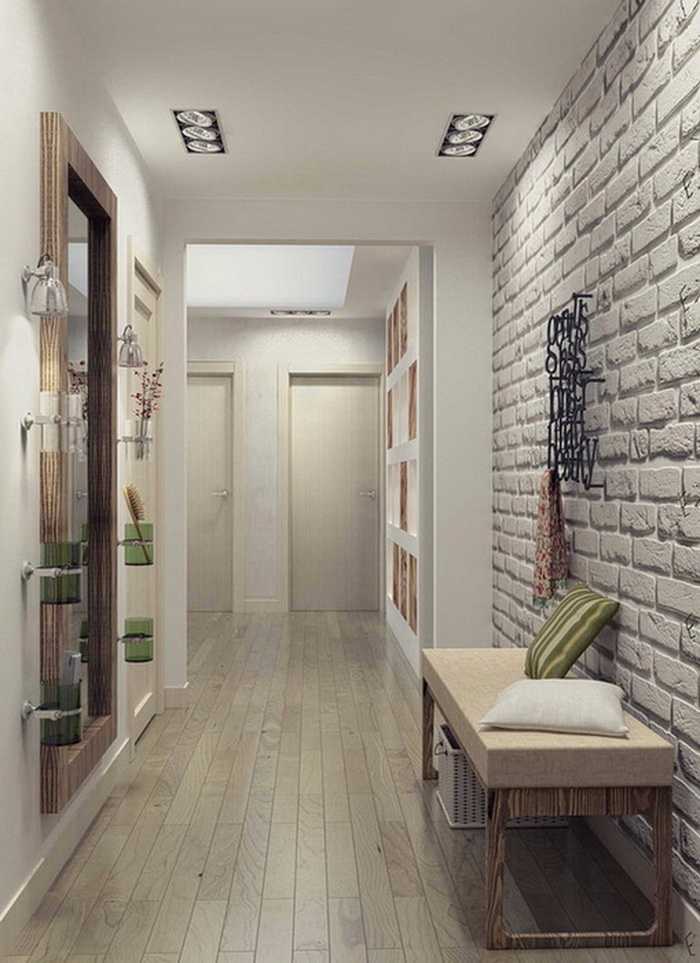
Finishing the hallway with decorative stone
- Relatively small weight. For far from poor people, whose corridors of houses are very wide, and they themselves love everything natural, it will not be difficult to finish the entrance hall with natural stone. But this method of finishing also has a significant disadvantage - the presence of a lot of weight, as a result of which additional strengthening of the walls is required. If, however, a decorative stone is used during the decoration of the hallway, then the material will be located in a rather thin layer, and its specific gravity will be less than that of natural stone.

For stone decoration, the walls must be further strengthened
- Ease of work. The development of artificial stone is carried out taking into account the fact that it will be used for wall decoration, even at the manufacturing stage it is fully adapted for this process. Its installation is very simple, and for its implementation you only need to stock up on cement and glue. And since there is no need to achieve a perfectly flat surface, you will not need to use a level.
Improving the fire resistance of the room. Considering that such material is non-combustible, this is its clear advantage over other types of finishes;
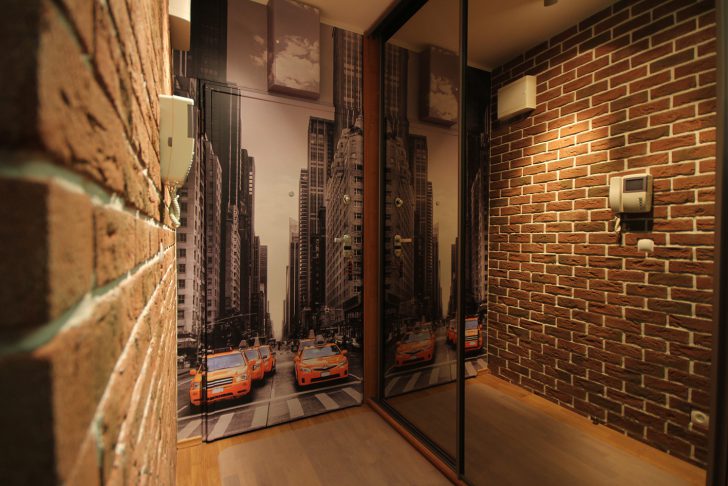
Decorative stone is quite easy to install
- Long service life. Having completed the decoration of the hallway with a decorative stone once, you will have time to change its other elements several times before this decoration becomes unusable. High-quality care for decorative stone can extend its service life up to 12-15 years.
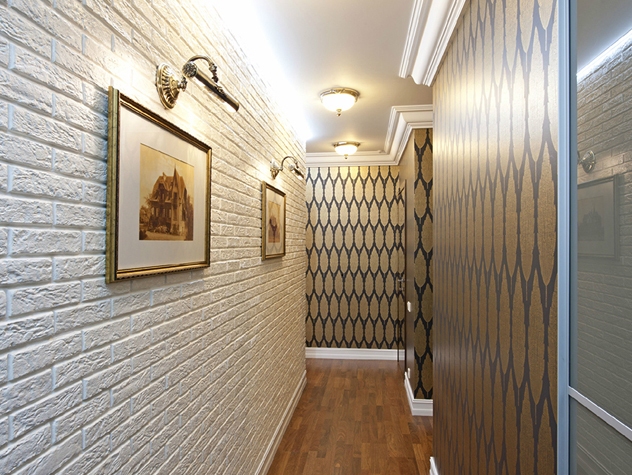
Decorative stone has a long service life
What are decorative finishing stones
Currently, the process of interior decoration is carried out using three types of decorative stone:
- the basis of which is cement;
- with a plaster base;
- agglomerate.
The appearance of such products is very similar to natural stone, but their specific gravity is much less, and is in the range of 14-50 kilograms per cubic meter. In addition, such material is also more affordable than natural stones. Another advantage lies in the ease of installation, since only one of its sides (front) is textured, while the rest are similar to tiles.
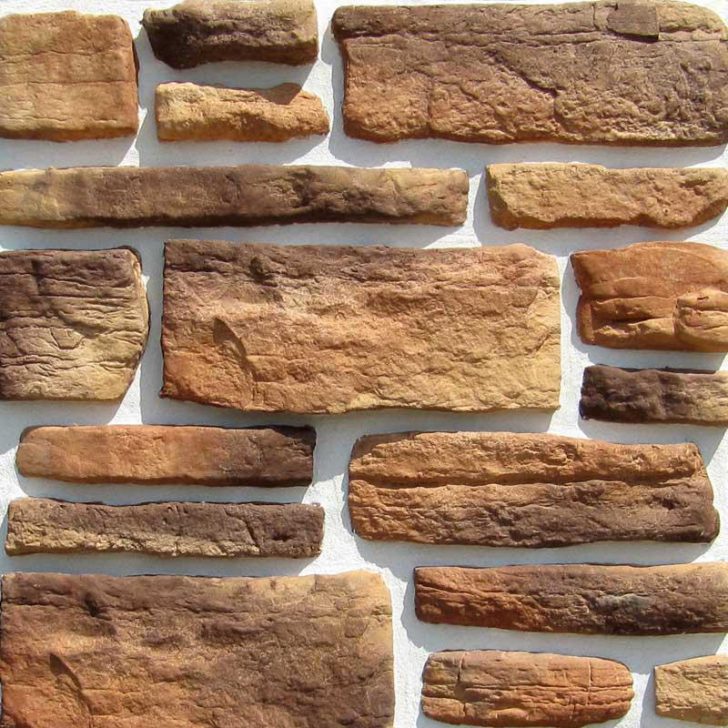
Finishing decorative stone
It is impossible not to note the existence of another variety of finishing decorative stones - clinker tiles, which in appearance are similar to brickwork. Clay is used for its manufacture, and the technology is similar to brick - firing in a kiln and further glazing. The main difference is that the thickness of such a tile is only 1-3 cm. It should be noted that this type of decorative stone is widely used for finishing the hallway in modern design styles - loft, hi-tech, etc.
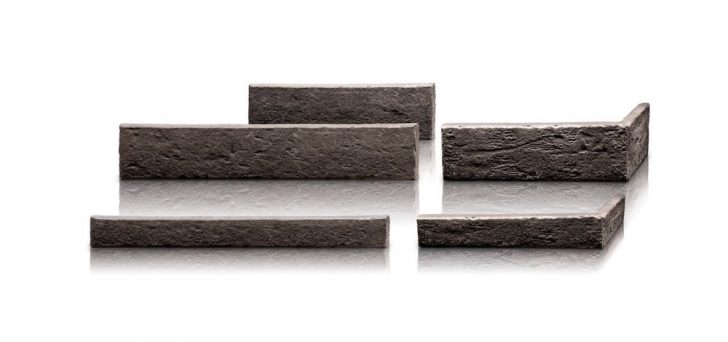
Clinker tiles
Gypsum base
The cost of such a stone is the smallest among the varieties described. In addition, its specific gravity is also the smallest. It is this material that is preferred during installation on drywall, since large loads are simply unacceptable for it.Its main disadvantage is excessive fragility, hygroscopicity, as well as destruction during wetting. The use of gypsum decorative stone for finishing the hallway seems possible if, at the end of the process, it is treated with a protective impregnation or acrylic varnish.
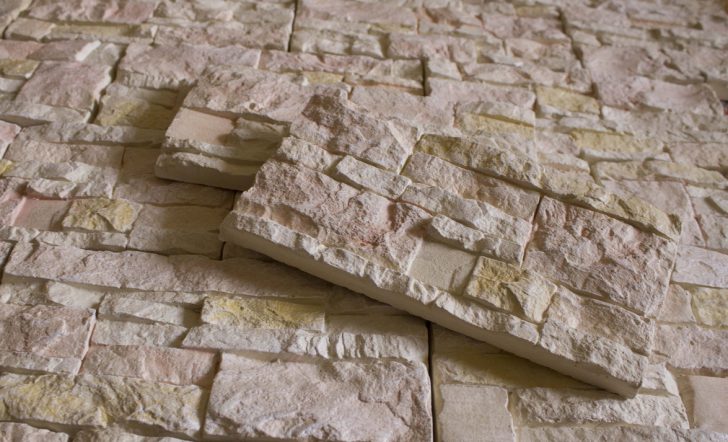
Gypsum-based decorative stone
cement base
This type of decorative stone is characterized by high strength and durability. It can be washed, even with a brush and various detergents. However, there are some pretty significant downsides:
- Not good for cutting. For this procedure, you will need to get a grinder with a diamond disc.
- High specific gravity compared to gypsum-based stone.
- High cost. For the manufacture of high-quality decorative stone, only high-quality cement is needed, the cost of which is quite high. Also, the cost depends on the date of manufacture, since the required margin of safety is gained in the order of 4 weeks. Consequently, the tile must be stored for a certain time somewhere after manufacture, and in compliance with specific conditions. There are costs for renting warehouse space, which affects the final cost.
However, the duration of the operational period, as well as ease of maintenance, can easily compensate for such shortcomings, therefore it is decorative stones with a cement base that are most often purchased for interior or exterior decoration of houses.
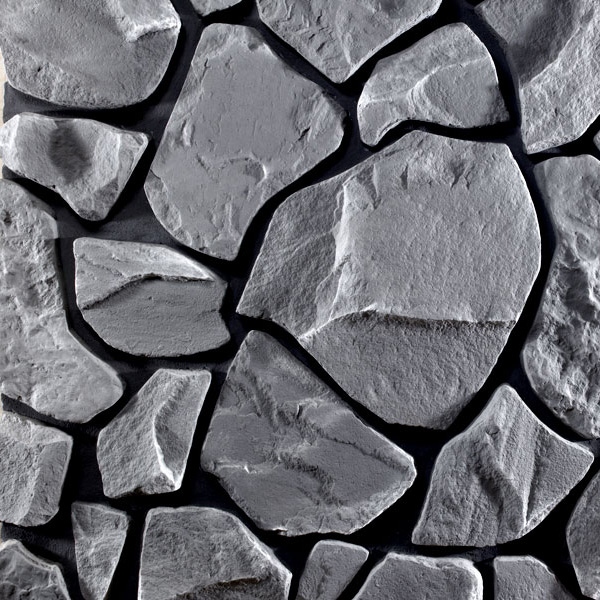
Decorative stone based on cement
Agglomerate
This kind of finishing stone was developed quite recently. It is based on natural rocks - quartzite, granite, marble, which are crushed into crumbs and supplemented with cement or polymer resins. To get a tile in bright colors, the use of a coloring pigment is allowed. The appearance of such a stone is really attractive, especially indoors.
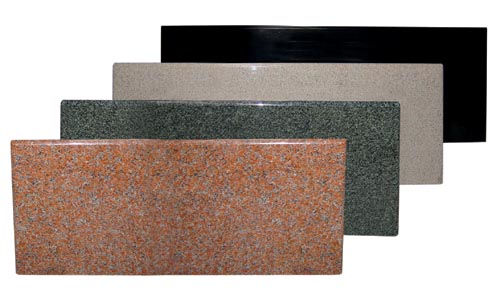
Agglomerate tiles
Coloring methods
When choosing a certain type of decorative stone, it is necessary to pay attention to the method of its coloring. The pigment can be added to the mortar during the preparation stage, as a result of which the entire tile will be laid out in the same shade. After that, the front surface is painted with tint tones, as a result of which it becomes more natural in appearance.
This technology avoids a big difference in hue even during chipping, because the shades are really close in color.
There is another option, according to which the pigment is applied exclusively to the surface. In this case, when chipped or cut, the color will vary.
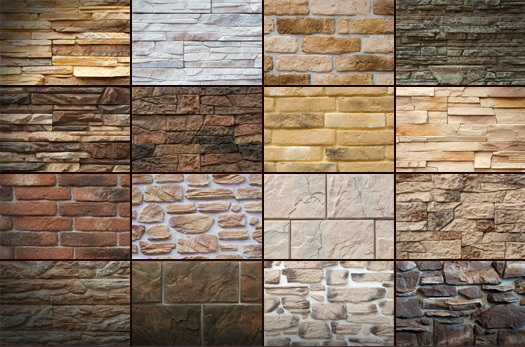
Decorative stone color options
How to choose color, size and texture
If with the help of decorative stone cladding is carried out in the hallway or corridor, it is required to determine not only what color scheme it will be presented in, but also its texture, size and shape. Most of us know that the use of decorative stone in light colors allows us to achieve a visual expansion of the space. Based on this, we can say that artificial stone is perfect for rooms that are not only spacious, but also well-lit.
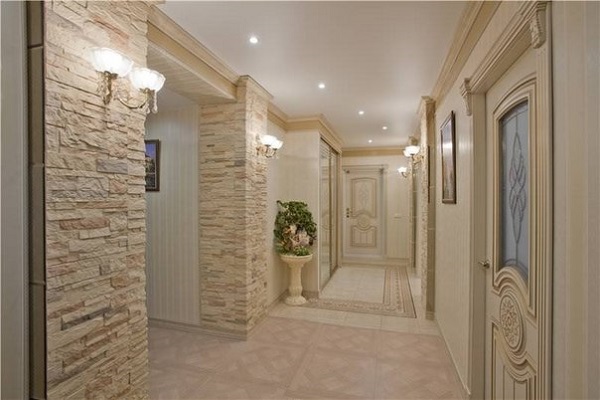
Light decorative stone in the hallway
If we consider the manufacturing method, then we can note the following types of decorative stones:
- rubble - imitating boulders and pebbles;

Rubble decorative stone
- chipped - similar to raw rock;
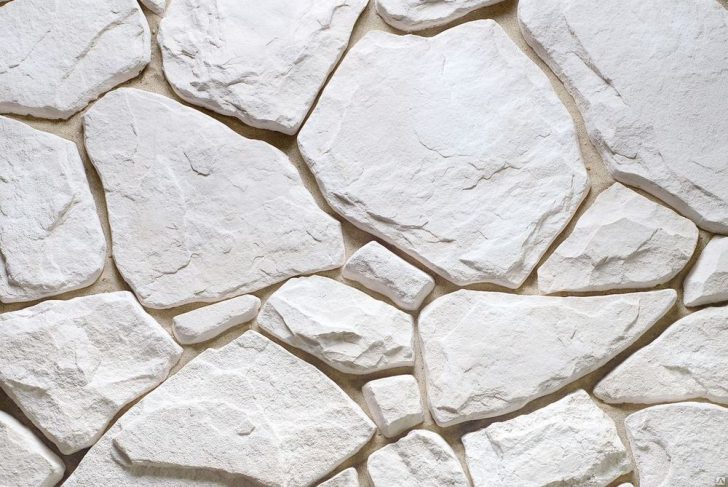
Chipped decorative stone
- sawn - such stones are characterized by a clear geometry, however, the front side does not go through the grinding procedure;
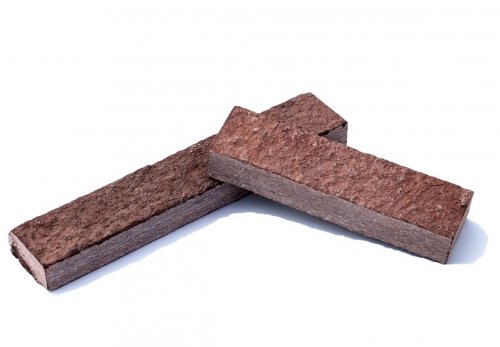
Sawn decorative stone
- mosaic - sorting of all elements according to size, color schemes, and are an organic composition;
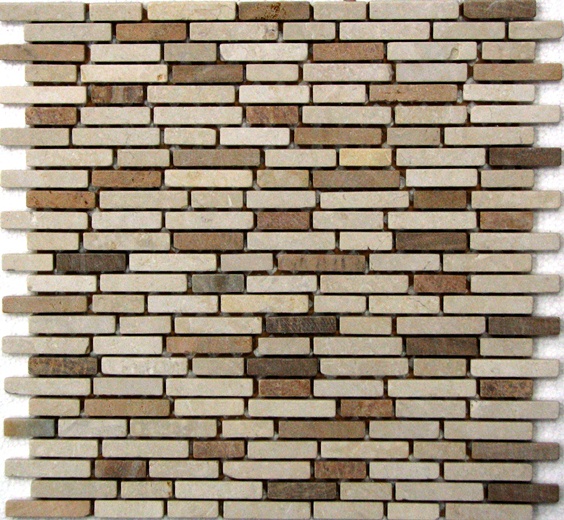
Mosaic decorative stone
- brick - imitate brick laying in various modifications;
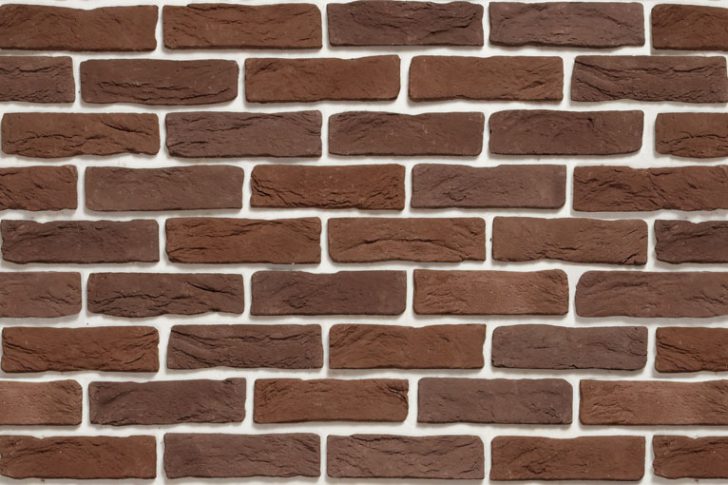
Brick decorative stone
- tiled - imitate polished masonry;
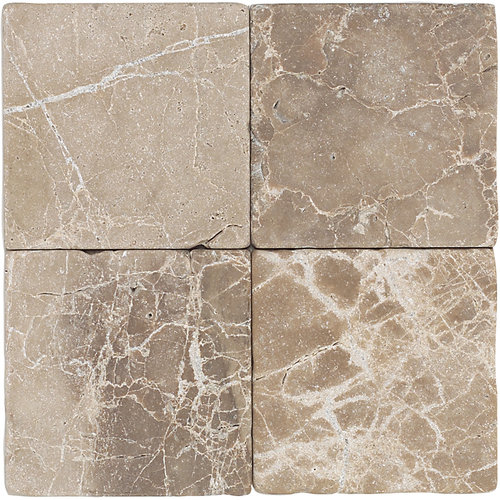
Tiled decorative stone
- fantasy - imitation of stones that do not exist in nature.
If there is not enough free space in the corridor or hallway, then it is better to refuse to use various types of decorative stones. It is better to choose one of the most suitable options, or combine a finishing material that is similar in shade and texture. If natural light does not enter the limited space of the hallway, then it is recommended to give preference to light colors of decorative stone, which is complemented by protrusions from the base. To diversify the color palette, you can simply combine decorative stone and a different type of finish.
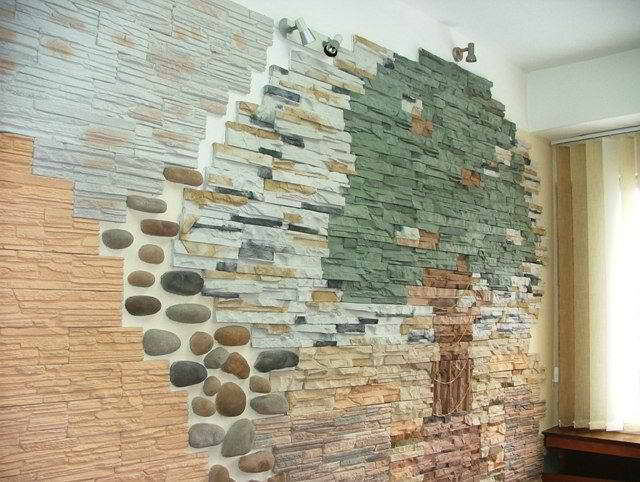
Combination of decorative stone in decoration
When choosing the type of decorative stone, it is necessary to build on the color temperature of the products, as well as their role during the arrangement of artificial lighting. Designers recommend abandoning frontal lighting for areas finished with decorative stone, as this will adversely affect the relief of the masonry. The central chandelier can be replaced by several lights built into the ceiling.
If you have chosen a decorative stone of the same color, but different in size, then you can treat yourself to creating original and attractive compositions. For active zones, fine-grained material is suitable, but with the help of large elements, skirting boards, doorways, visible corners, etc. are finished.
How to fit artificial stone into the overall design of the hallway
The use of decorative stone in the hallway can be an excellent design decision or a waste of money - it depends on the thoughtfulness of the logical completeness of your plan.
First of all, we need to talk about colors. Most often, there are no windows in the hallway, and it almost always receives only artificial lighting. In this case, the most correct solution would be to use stones with light tones, which, thanks to the ingress of artificial light, can shine beautifully and reflect light.
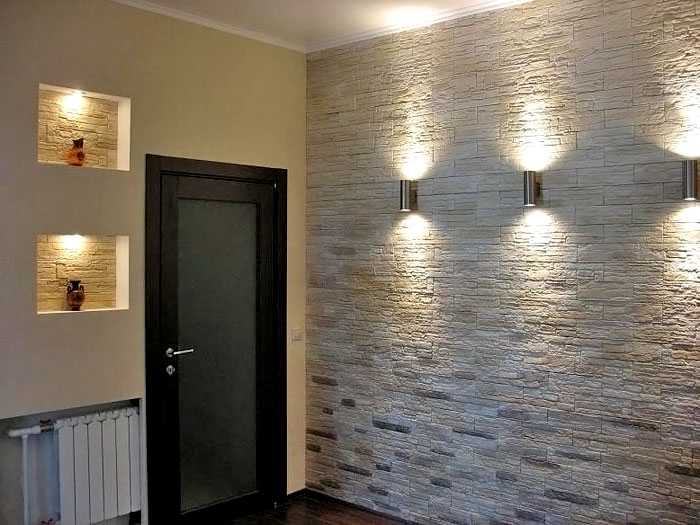
Light decorative stone will visually increase the space of the hallway
For some cases, it is not allowed to finish the entire hallway with stone. Most often, partial decoration is used, which, if properly approached, will have a rather stylish appearance.
You should not select stones whose shade will be too different from the rest of the finish, as this will lead to a lack of harmony between the individual elements of the decor.
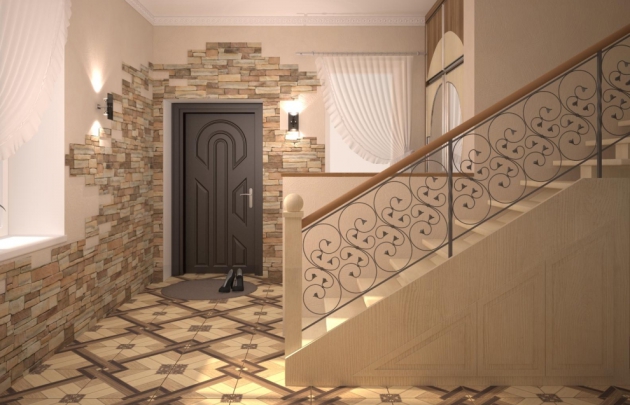
Partial decoration of the hallway with decorative stone
If you are going to decorate the corridor with decorative stone, then you can add green plants to the composition. If you really have a taste, then a competent selection of plants will change the perception of the interior. And if independent experiments may not always be successful, then the designer will always be able to choose the right combination.
In addition, according to designers, the use of stones in decor should be accompanied by the rejection of centralized lighting. It is better to give preference to small, evenly spaced light sources. And to highlight mirrors, paintings, etc. it is better to use additional lighting.
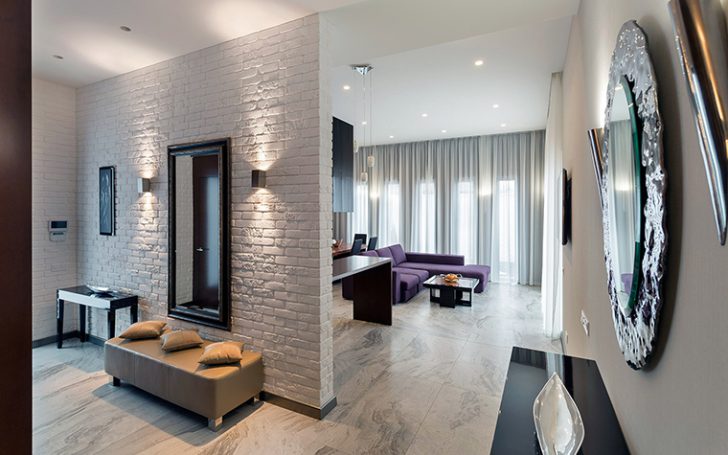
Hallway lighting with stone trim
Decorative stone flooring in the hallway
“Arrangement of flooring with decorative stone in the hallway will cost you a little more than in the case of laminate or linoleum”
If you want to get a really beautiful entrance hall, which will not require additional care and which will not create problems during operation, then it's time to choose tiles as a floor covering for it,imitating natural stone. Such a coating will not only be reliable, practical, durable, wear-resistant, antibacterial, but will also look very attractive and rich.
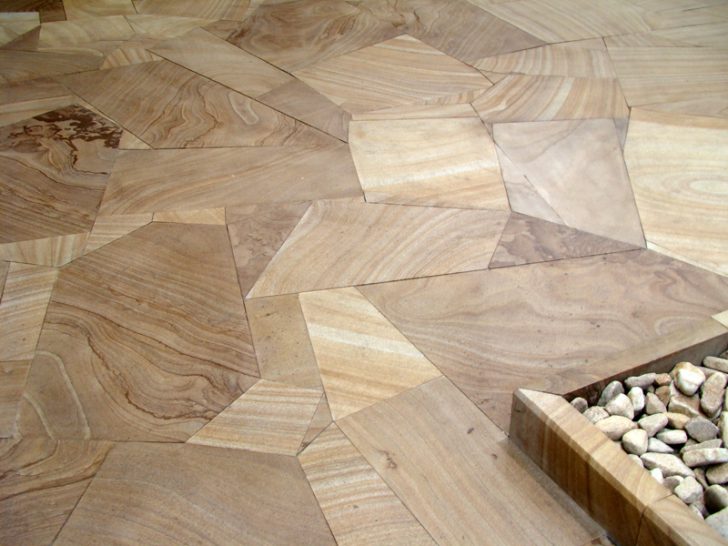
Decorative stone flooring in the hallway
It is quite logical that the arrangement of flooring with decorative stone in the hallway will cost you a little more than in the case of laminate or linoleum. Yes, and the cost of such work will be more, because self-laying of such tiles requires good skill, so it is highly likely that you will have to invite specialists. However, the beauty of the appearance and the presence of the above-described technological characteristics still make it possible to level the disadvantage in the form of high cost.
If the hallway area is small, then the ideal solution for it is to use floor tiles that imitate one of the types of marble. The presence of light veined surfaces can add luxury and nobility even to the most ordinary interior. In addition, combinations of such a floor covering with decorative inserts and even compositions of a different color scheme will look quite natural.
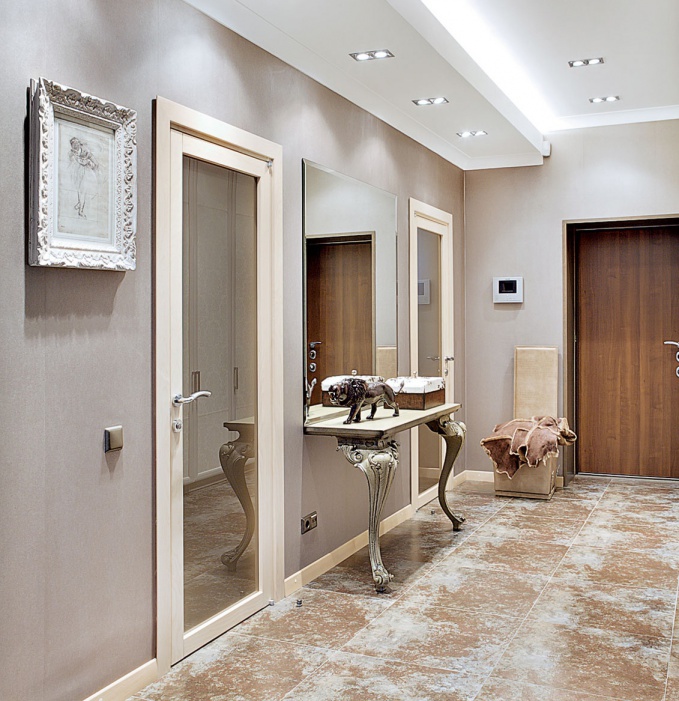
Marble floor tiles in the hallway
A visual increase in the height of the corridor or hallway is achieved by using light colors during wall decoration, and dark shades of floor tiles, which can be represented by imitation of graphite, granite, etc. This flooring will look great with any modern design style.
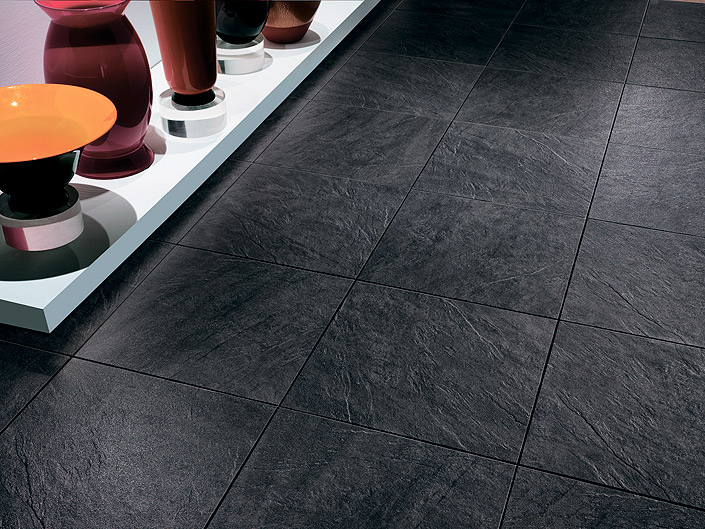
Dark floor tiles imitating stone
How to combine classic style and decorative stone
“It is the presence of decorative stone in the hallway that adds a classic touch to it”
If you prefer to decorate the interior in a classic style, then the use of such a wild material as artificial stone can cause dissonance with the general style of classicism. However, the combination of such elements is quite good, but for the classics, a significant area of \u200b\u200bthe room is mainly required.
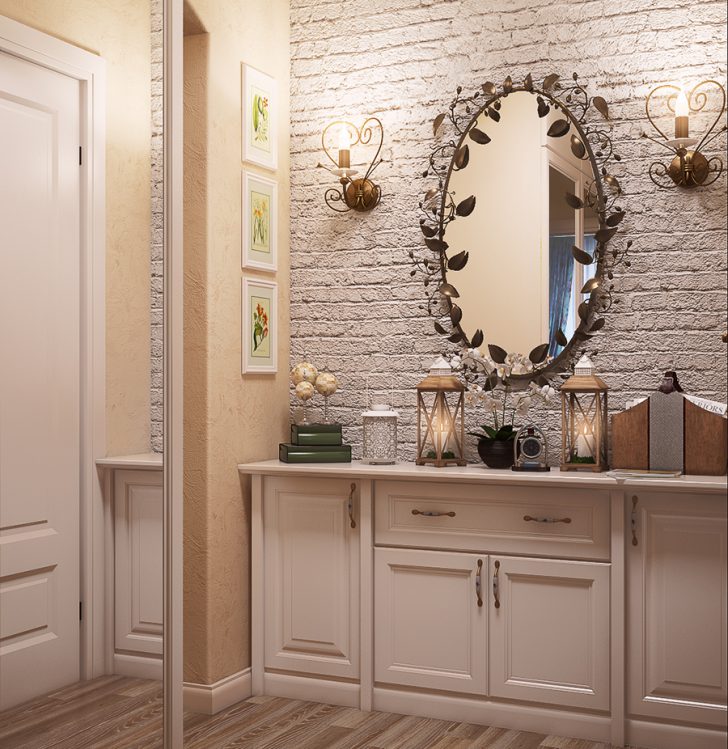
Decorative stone in the hallway in a classic style
In addition, in some situations, it is the presence of a decorative stone in the hallway that adds classic notes to it. If the conversation is about the classics, then this means the presence of fundamentality and solidity, for the purposes of which masonry is excellent. To get the maximum effect, you can use tiles for arranging the floor. However, it is necessary to prevent overloading the decor with numerous elements, otherwise the overall impression of the hallway can simply be spoiled.
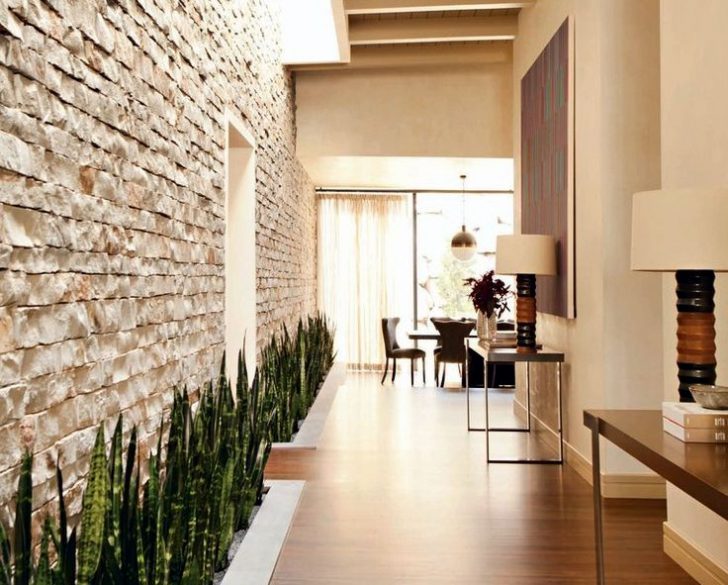
Do not overload the hallway in a classic style with decorative elements
Conclusion
If you have decided to use artificial stone for decorating the walls of the hallway, you should first calculate the budget. Despite the fact that such a material is considered inexpensive, this applies primarily to comparison with natural stone. But the cost of almost any other materials used for decoration may be more affordable. It is also necessary to take into account that the high cost of such a material is more than offset by the length of its operational period. But do not forget that the use of masonry over the entire surface is unlikely to give a good effect, but the point location of such masonry, focusing on certain elements, will not only revive the design, but also reduce the cost of repairs.
Ordinary wallpaper or decorative plaster can perfectly complement the decoration of decorative stone in the interior of a corridor or hallway. However, most often the owners of such premises make a choice in favor of painting the walls.When choosing a paint color, it is necessary to ensure that it harmoniously matches the artificial stone masonry, only in this case your entrance hall will have a first-class look and you will really not be ashamed to show it even to the most experienced designers, who are unlikely to find fault with anything.
back to index ↑Photo gallery - decorative stone in the hallway
Video

